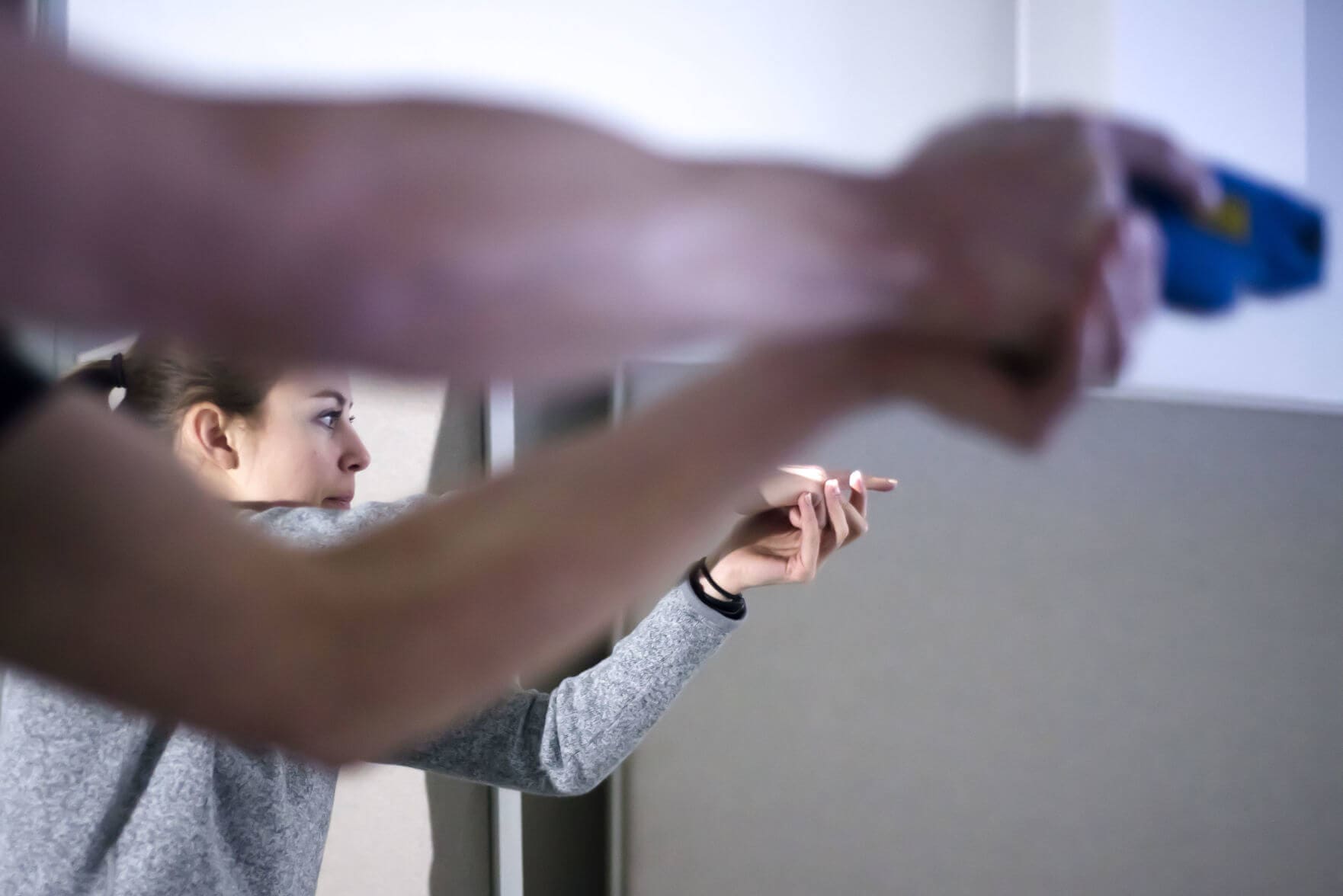Cops shoot, or don’t, in simulation
Published

Armed with guns and Tasers, Teton County commissioners Natalia Macker and Greg Epstein were told to get ready to face a man who might have a gun.
“This is an auto burglary in progress,” Teton County Sgt. Trevor Aitken told them. “Your suspect is a white male, about 5-foot-8 in a gray shirt. Other officers are responding, too.”
In a dark room on a large wall, a video of a parking lot is projected.
Epstein and Macker are encouraged to interact with the virtual suspect.
The goal is to take control of the scene, keep the peace and, if possible, de-escalate the situation.
“Sir, show me your hands,” Epstein said with his gun in hand but pointed down. “Step away from the vehicle.”
The virtual man comes out from behind a car and wildly runs toward the commissioners, swinging his arms like he’s ready for a fight.
They don’t shoot because they can see his hands and he doesn’t have a gun. The video ends.
“These are real scenarios we face all the time,” Sheriff Matt Carr told them. “It’s a great training tool for our staff, and the idea isn’t to break people down but to build them up.”
The Teton County Sheriff’s Office invited commissioners to use the interactive simulation training, called Multiple Interactive Learning Objectives Range, better known as MILO Range in the law enforcement community, to gain perspective about training techniques.
“I think it is a great resource,” Macker said. “As a citizen, and frankly as a parent, knowing that we have law enforcement officers and personnel who are considering a variety of different scenarios that it’s not possible to get real-life experience in is reassuring, and it’s a great step.”
Jackson Hole News & Guide, Emily Mieure
March 20, 2019

